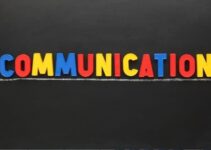Methods For Teaching Reading
After one is aware of the purpose and process of reading, one has to decide on the style that needs to be applied to best suit the purpose and the reading material. The approach to reading style determines the basic question-‘How to read?’.
There Are Two Approaches to Reading:
1. Fast reading approach/style
2. Slow reading approach/style
To be an effective reader, one needs to use a mixture of the above techniques; varying the type of reading you employ, and the speed at which you read.
1. Fast Reading Approach/Style
This approach is best suited when the purpose of reading is to:
- Select the relevant material from a large quantity of reading material.
- Get an overview of what is contained in the reading material.
- Look for certain specific words, information, dates, and so on.
- Identify the core theme or message being conveyed.
Scanning and skimming are two techniques that can be used for fast reading so as to serve one or more of the purposes of fast reading.
(i) Scanning: Scanning is a fast reading style in which the reader examines the text to look for specific information. This type of reading is usually done for searching for information through a list of numbers, addresses, and supplies for a specific one.
It is usually done very quickly. You just have to see the words on the page and not actually read. In fact, some people do not consider scanning as a reading technique but as a search technique. It involves merely spotting the required keywords or numbers.
(ii) Skimming: This type of reading is done when you want to identify the core/main idea of the material. It provides a broad overview of what is primarily contained in the material. It is useful for selecting relevant material which can, later on, be read in detail. It saves a lot of time by not spending too much time reading what is of no relevance to the reader.
It is also suitable when a lot of material has to be read in a limited amount of time. Here, one does not read word by word. It should be kept in mind that skimming is, by no means, a substitute for thorough reading; skimming should be used only to locate material quickly. No in-depth understanding of what is being read is required. Generally, it involves going through the chapter headings and subheadings, introduction and summaries.
Two basic skimming techniques have been identified:
- Start Finish Technique
- First Sentence Technique
1. Start Finish technique: This technique involves reading the beginning and end of each chapter, section, or subsection. This technique is based on the assumption that written material is structured in three parts-introduction, body, and conclusion. Also, the central theme will briefly appear in the introduction and the conclusion and will be discussed in detail in the body of the text.
It needs to be mentioned that to read the starting and finishing paragraphs, one may have to resort to the slow reading style so as to get a thorough understanding of the central theme.
2. First Sentence Technique: This technique involves reading the first sentence of each paragraph. This technique is based on the assumption that the first few sentences or the opening sentence of each paragraph introduce the main points that will be discussed in that paragraph. Thus, reading the first sentence of each paragraph gives a fairly clear understanding of the major contents and structure of the material being read.
2. Slow Reading Approach/Style
Reading is an enjoyable activity but at times it becomes tedious, especially when a person reads in a language in which he is not yet familiar or fluent as his attention gets divided between the content of the message and the language itself.
Research also indicates that decoding a message is also very important, as without decoding the message the reader fails to ‘understand’ it. This is usually the case when children read without understanding what they are reading. It is only after decoding the message that learning can take place. Slow reading is required for in-depth thorough analysis and understanding of the material. It involves paying attention to detail.
This style is best suited when the purpose of reading is to remember what has been read, analyze what has been read, follow technical instructions, to gain an in-depth understanding or to critically evaluate the material. It is used when the material being read is comparatively difficult to understand and requires to be carefully analyzed. It is suitable for technical material, text containing unfamiliar words, and so on.
This style is best suited when the purpose of reading is to remember what has been read, analyze what has been read, follow technical instructions, to gain an in-depth understanding or to critically evaluate the material. It is used when the material being read is comparatively difficult to understand and requires to be carefully analyzed. It is suitable for technical material, text containing unfamiliar words, and so on.
Analytical reading and critical reading are two slow reading techniques. Analytical reading involves active reading in which the reader gains an in-depth understanding of what he is reading by simultaneously analyzing it.
Critical reading involves evaluating the arguments presented by the writer.
To gain a deeper understanding of concepts it is useful to critically read the text. Critical reading provides an answer to the following questions:
Are the arguments logical?
Are the statements backed by adequate evidence?
Are both sides of the case presented evenly?
Thus, a critical reader tries to answer the question of whether he agrees with the writer and if not what is his argument to counter the writer’s point of view.
Photo by: Manos
References:
http://fis.ucalgary.ca/Brian/611/readingtype.html
http://www.learningtolearn.group.shef.ac.uk/read/read_nhe_stylesofreading.html






